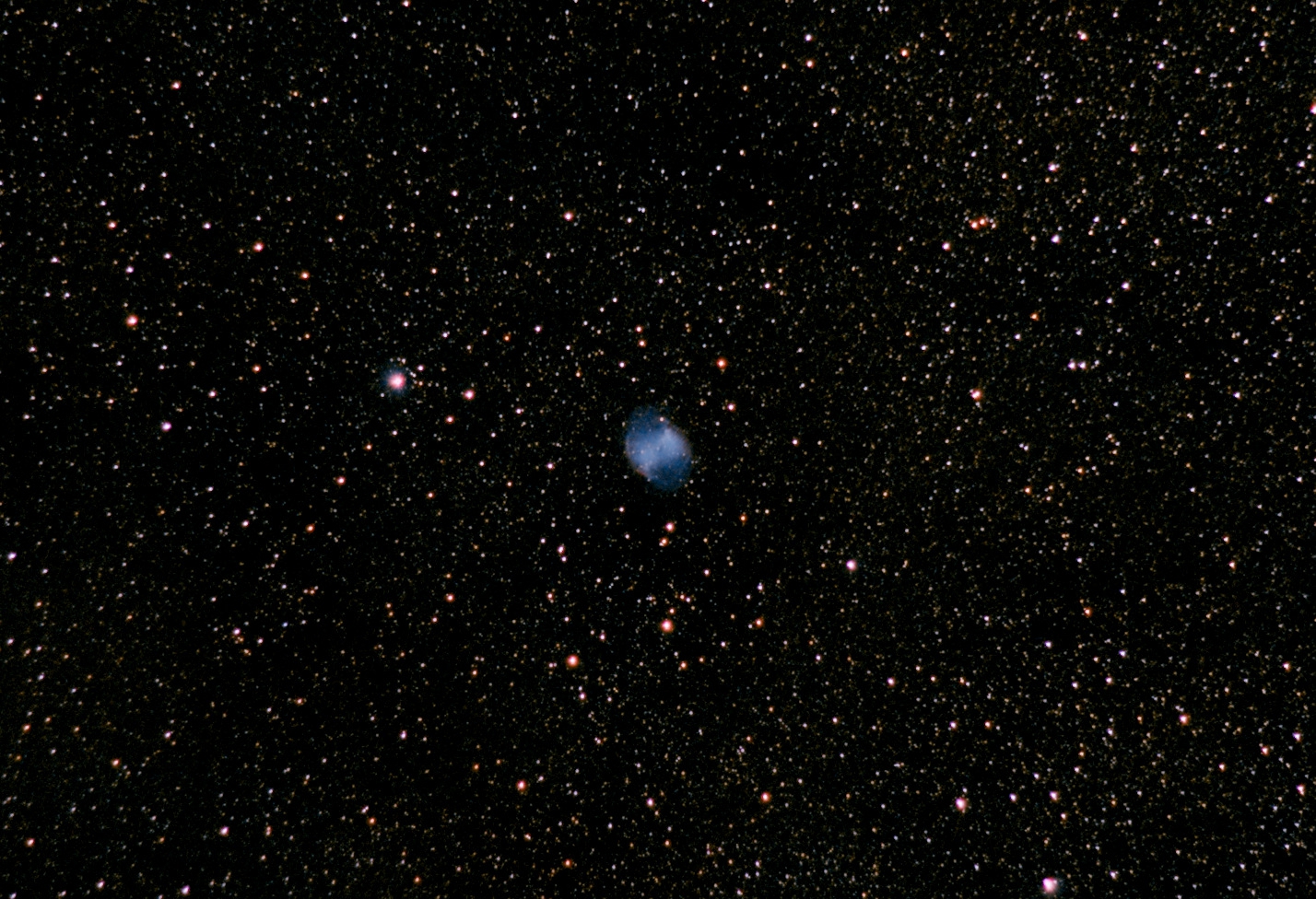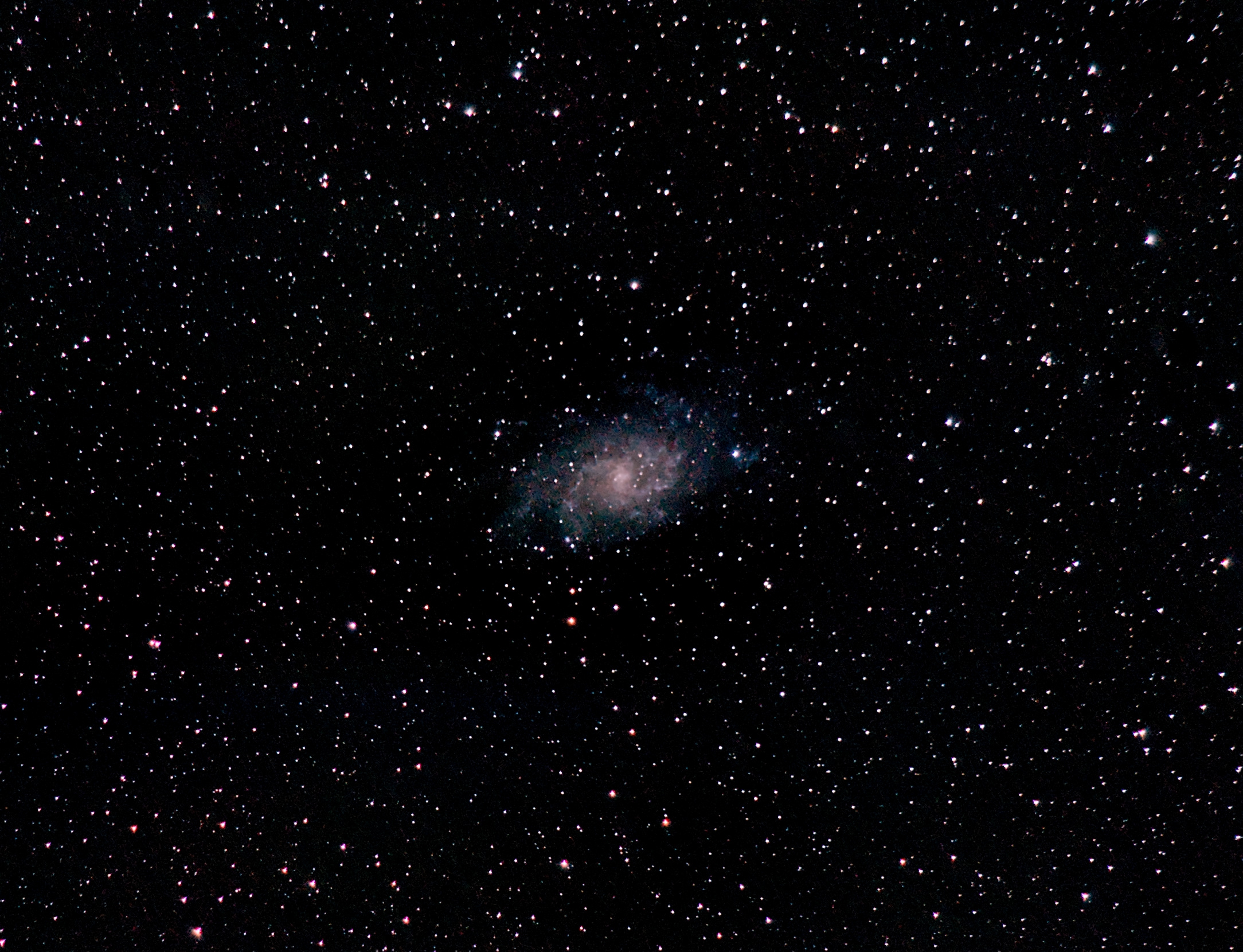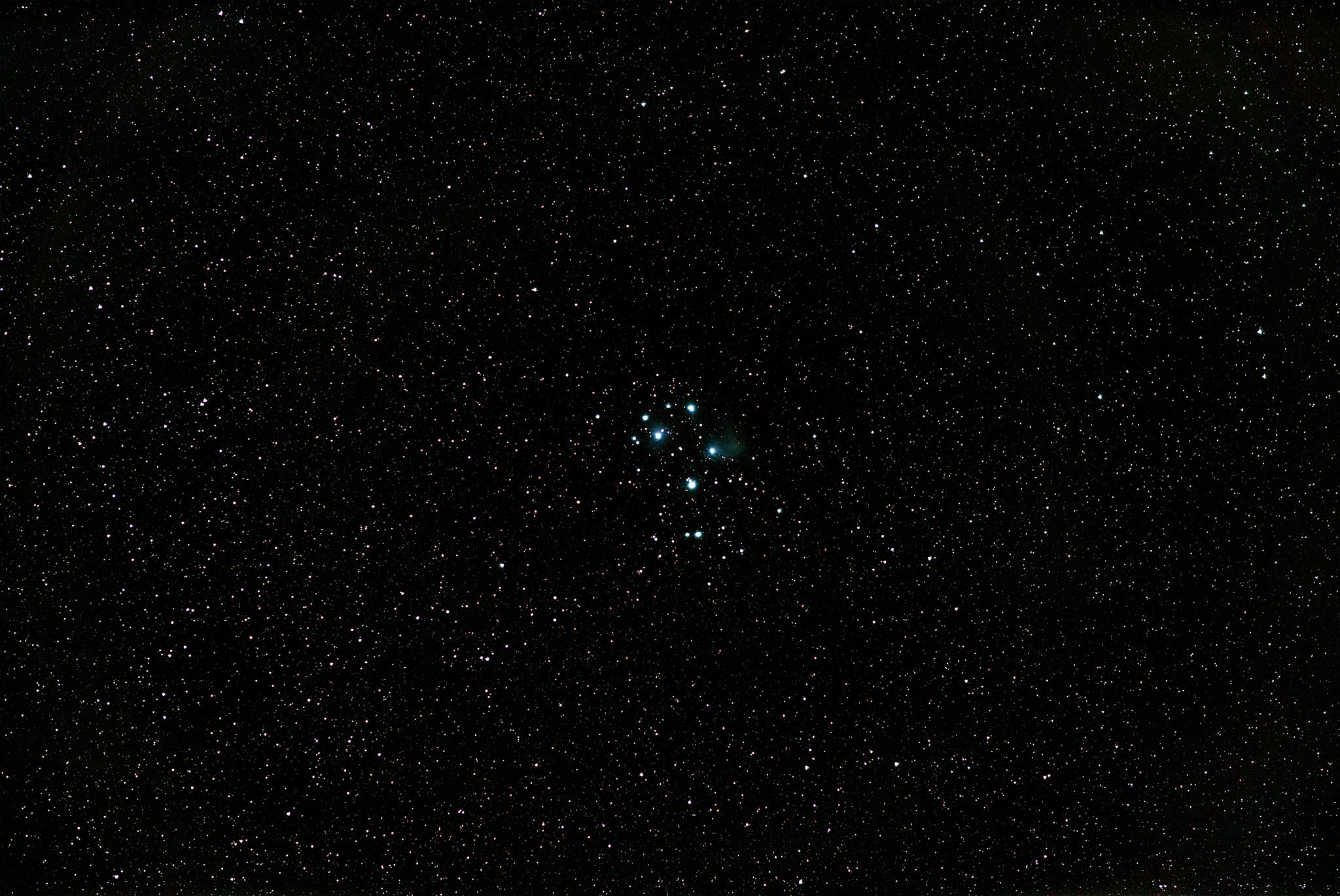lp filter
14 Sep 2018Friday night – you know what that means: astrophotography, wooooo party. I took delivery today of a 72mm light pollution filter I bought on a whim for my Canon 200mm/2.8. There wasn’t much research that went into this purchase: it was simply the only filter I could find that’d fit my lens. It claims it filters out 570-610 nm so I decided to give it a whirl. First, though, I setup my telescope and attempted to get prime focus (without the use of a barlow). I succeeded but gave up pretty quickly on any attempts at photography for the simple reason that there are two or three mega-bright sodium vapor lamps blaring into my yard, and while the OneSky 130 is good at a lot of things, blocking incidental light is not one of them. Since it’s collapsible, half of the telescope is exposed (just 2 tubes), which is not a problem in dark skies, but in the city, it’s a massive opening for light/glare. I used it to align the mount (which I’ve gotten down to a relatively quick process now, fortunately), and took it off and just rolled with my camera.
First target was the Dumbbell Nebula (M27) simply because it was high in the sky. It came out pretty well! This is my first attempt actually picking up any nebulosity from anything with color, so that feels pretty good.
- Subject: Dumbbell Nebula (M27)
- Camera: Sony A7S II
- Lens: Canon 200mm/2.8 II w/ Tamron 2X teleconverter
- Filter: Breakthrough Nightsky 72mm
- Aperture: f/2.8
- ISO: 800
- Shutter Speed: 20”
- Light Frames: 80
- Dark Frames: 20
- Flat Frames: 20
- Offset Frames: 20
- Software: Pixinsight - DynamicCrop, DynamicBackgroundExtraction, Background Neutralization, Color Calibration, SCNR noise reduction, Masked Stretch, Histogram Transformation, Curves Transformation, Unsharp Mask
Next I tried Andromeda again because why not. I still struggle with processing Andromeda – DBE seems to work splendidly on other more remote targets, but Andromeda’s size means I was constantly struggling between eliminating the background noise and losing detail in the galaxy itself. I am hoping this will be a non-issue when I try again from darker skies. Additionally, I might have better luck if I waited till it was higher in the sky. Nonetheless this is still the best results I’ve gotten of Andromeda – and not bad considering I’m shooting from the middle of a white-zone urban area.
- Subject: Andromeda (M31)
- Camera: Sony A7S II
- Lens: Canon 200mm/2.8 II w/ Tamron 2X teleconverter
- Filter: Breakthrough Nightsky 72mm
- Aperture: f/2.8
- ISO: 800
- Shutter Speed: 20”
- Light Frames: 80
- Dark Frames: 20
- Flat Frames: 20
- Offset Frames: 20
- Software: Pixinsight - DynamicCrop, DynamicBackgroundExtraction, Background Neutralization, Color Calibration, SCNR noise reduction, Masked Stretch, Histogram Transformation, Curves Transformation, Unsharp Mask
By this point I was getting tired and running out of ideas, so I just pointed at M33 again, to see if the light pollution filter yielded better results than the previous attempt. It came out okay – slightly better than my first attempt, though I think that’s owed more to my skill with postprocessing improving than any improvement in the actual data.
- Subject: Triangulum Galaxy (M33)
- Camera: Sony A7S II
- Lens: Canon 200mm/2.8 II w/ Tamron 2X teleconverter
- Filter: Breakthrough Nightsky 72mm
- Aperture: f/2.8
- ISO: 800
- Shutter Speed: 20”
- Light Frames: 80
- Dark Frames: 20
- Flat Frames: 20
- Offset Frames: 20
- Software: Pixinsight - DynamicCrop, DynamicBackgroundExtraction, Background Neutralization, Color Calibration, SCNR noise reduction, Masked Stretch, Histogram Transformation, Curves Transformation, Unsharp Mask
It was around this time that I noticed the Pleiades had risen – which around here is a sure sign you should be in bed. Because I prefer to make bad decisions, I tried to photograph that as well. It seemed to be turning out okay, but postprocessing attempts fell apart due to some sort of data corruption. I am not really sure what the issue was (something with my darks and/or offsets, I think), but it was segfaulting Pixinsight and DeepSkyStacker both. I managed to coax DSS to actually stack them somehow, but the whole thing was kindof a mess and I wound up with some sort of green tinge (in stark contrast to the normal stunning blue through the nebulous gas in the foreground you usually see). Oh well, next time!
- Subject: Pleiades (M45)
- Camera: Sony A7S II
- Lens: Canon 200mm/2.8 II
- Filter: Breakthrough Nightsky 72mm
- Aperture: f/2.8
- ISO: 160
- Shutter Speed: 20”
- Light Frames: 80
- Dark Frames: 20
- Flat Frames: 20
- Offset Frames: 20
- Software: Stacked in DSS, Pixinsight - DynamicCrop, DynamicBackgroundExtraction, Background Neutralization, Color Calibration, SCNR noise reduction, Masked Stretch, Histogram Transformation, Curves Transformation, Unsharp Mask



